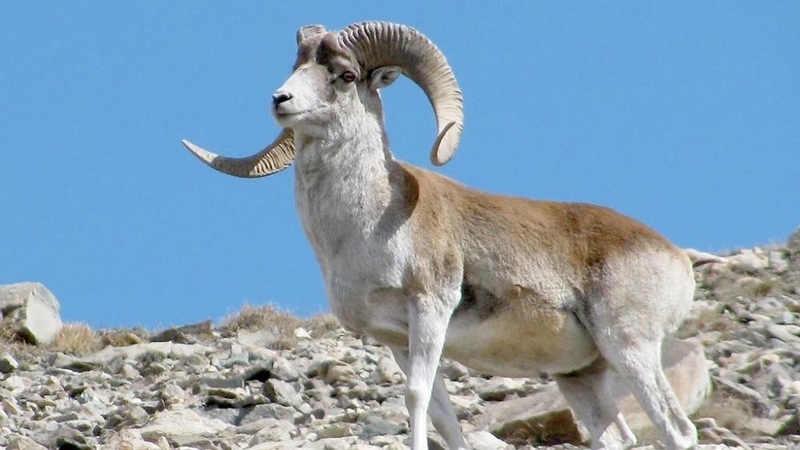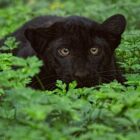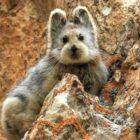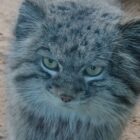How big is a Marco Polo sheep?

Named after the famous Venetian explorer who traversed these lands centuries ago, the Marco Polo sheep (Ovis ammon polii) inhabits some of the most inhospitable regions on the planet, primarily the Pamir Mountains, which span across Tajikistan, Kyrgyzstan, Afghanistan, Pakistan, and China.
Physical Characteristics
The Marco Polo sheep boasts a set of distinctive physical attributes that make it a remarkable species among ungulates. Its most renowned feature is undoubtedly its long, spiraling horns, which have captured the fascination of observers and hunters alike for centuries. These horns have been measured, with spans reaching up to an impressive 140 cm (55 in), making them the longest among all sheep species.
What sets the Marco Polo sheep’s horns apart is not just their length but also their unique coil pattern. Unlike other sheep whose horns may curve differently, O. a. polii‘s horns follow a distinct coil pattern, with the tips pointed horizontally away from the head. Despite this horizontal orientation, the tips are remarkably resilient and are rarely broken, a testament to the sheep’s evolutionary adaptations for survival in rugged mountain environments.
The horns of the Marco Polo sheep begin growing shortly after birth, typically within 15 to 20 days. Their growth in length is most pronounced during the first year, with noticeable thickness growth occurring during the initial two years of life. This growth process contributes to the impressive size and structure of the horns, making them a prized trophy for hunters and a defining characteristic of the species.
Distinct coats
In addition to their magnificent horns, Marco Polo sheep exhibit distinct coloration. They are primarily dark brown in color, with white underparts separated by a dark band of hair. This color contrast is particularly noticeable on O. a. polii, where a clearly defined white patch adorns the rump. As winter approaches, the white hair on male sheep grows longer, forming a prominent ruff around their necks. However, this feature is less pronounced in O. a. polii compared to other subspecies.
Females, on the other hand, have lighter coats than males and do not undergo as drastic a seasonal color change. Their faces are lighter in color compared to their bodies, adding to the visual distinction between males and females within the species.

Not a Normal Sheep
The Marco Polo sheep’s physical stature is also noteworthy. Mature rams have an average weight of around 126 kg (278 lb), with a height at the withers reaching approximately 113 cm (44 in). Ewes are slightly smaller, with an average height of 100 cm (39 in). During the rutting season in December, males exhibit heightened aggression and territorial behavior as they compete for mating opportunities.
Gestation in Marco Polo sheep lasts about 160 days, with single births being the norm and twins being uncommon. The average lifespan of these majestic creatures is around 13 years, and their age can be estimated by the rings that develop on their horns each year.
Behavior and Adaptations
Marco Polo sheep exhibit a fascinating array of behaviors and adaptations that contribute to their survival in the harsh mountainous environments they call home. Similar to other members of the genus Ovis, these sheep display social dynamics, mating rituals, and physical adaptations that are finely tuned to their rugged habitat.
Social Structure and Group Dynamics
Marco Polo sheep are inherently social animals, living in small flocks that typically consist of a few dozen individuals. However, their social structure becomes more complex during certain periods of the year. In summer, they tend to break into smaller flocks segregated by sex, allowing for more efficient foraging and resource utilization.
During the rutting season, which typically occurs in late fall or early winter, Marco Polo sheep exhibit changes in their group behavior. They come together to form larger groups, primarily for protection and energy conservation. This grouping behavior is crucial during this time of heightened activity and competition among males.
Rutting Season and Dominance Hierarchies
The onset of the rutting season heralds a dramatic shift in the behavior of Marco Polo rams. Dominant males, usually those over six years old, engage in fierce battles for dominance within their flocks. These battles are not merely displays of strength but strategic maneuvers to establish hierarchical order and mating rights.

The fighting style of Marco Polo rams is notable for its intensity and unique techniques. When vying for dominance, males stand side by side, spinning around before one charges forward. This behavior, coupled with rising on hind legs during clashes, is reminiscent of the fighting habits observed in goats rather than traditional lowland sheep.
The battles for dominance often result in physical injuries, with rams chipping their horns or breaking their noses in the heat of combat. These injuries, while costly, are a testament to the high stakes involved in securing mating opportunities and maintaining dominance within the herd.
Mating Rituals and Reproductive Strategies
Once dominance has been established, dominant rams select their ewes for mating. This selection process is crucial, as it determines the genetic makeup of future generations and contributes to the overall fitness of the herd. Males display a range of behaviors during this phase, including herding females and engaging in the Flehmen response to assess the estrus status of potential mates.
The Flehmen response, also known as “lip-curl”, involves raising the head with the mouth open and upper lip curled back. This behavior allows males to detect pheromones in the urine of ewes, indicating their receptivity to mating. After identifying a suitable mate, the ram pairs off with the ewe for copulation, often staying with the flock for a period afterward.
Hybridization
Hybridization, the interbreeding between different species or subspecies, is a phenomenon that can have significant implications for wildlife populations, including Marco Polo sheep. In recent years, concerns have arisen regarding potential hybridization events between Marco Polo sheep and other closely related species or subspecies within the genus Ovis.
The recent case involving Arthur “Jack” Schubarth and his illicit creation of “giant hybrid sheep” sheds light on the potential risks associated with hybridization in wildlife conservation. Schubarth’s activities, which involved illegally importing genetic material from endangered Marco Polo argali sheep to create hybrid species, raise significant ethical and ecological concerns.

The Hybridization Process
Schubarth’s scheme involved a complex process of genetic manipulation and artificial breeding. By sending genetic material from Marco Polo argali sheep to a third-party lab for cloning, he generated cloned embryos, which were then implanted into female sheep on his ranch. This process ultimately resulted in the creation of a single pure genetic male Marco Polo argali, referred to as “Montana Mountain King” or “MMK.”
Using MMK’s semen, Schubarth and his co-conspirators artificially impregnated female sheep, leading to the production of hybrid animals. The goal behind this manipulation was to create larger and more valuable species of sheep for sale to captive hunting facilities, primarily in Texas.
Ethical and Ecological Implications
The creation of hybrid species through such methods raises several ethical dilemmas. First and foremost is the violation of international and domestic laws protecting endangered species like the Marco Polo argali. These laws are in place to safeguard the genetic integrity and conservation status of vulnerable wildlife populations.
Furthermore, the introduction of hybrid species into natural ecosystems can have detrimental effects. Hybridization can lead to genetic dilution, reducing the purity of native species and compromising their ability to adapt to changing environmental conditions. It can also result in the spread of diseases and parasites, impacting both native and hybrid populations.










